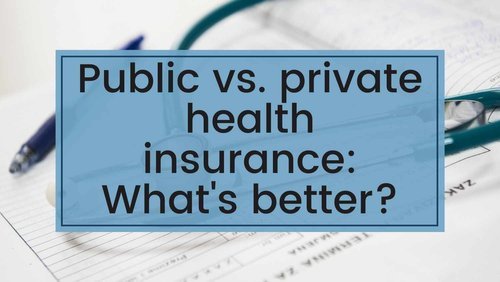Private Health Insurance vs. Public Health Insurance
Understanding the differences between private health insurance and public health insurance is crucial when deciding how to manage your healthcare needs. Both systems offer distinct benefits and drawbacks, depending on your budget, health requirements, and preferences.
What is Private Health Insurance?
Private health insurance is a policy purchased from private insurance companies. Individuals or employers can buy these plans to cover healthcare expenses. Private insurance is known for offering tailored plans and faster access to medical services.
Key Features of Private Health Insurance
- Premiums: Policyholders pay monthly premiums, which can vary based on coverage levels, age, and pre-existing conditions.
- Coverage Options: Plans can include a wide range of services, from hospital stays and surgeries to wellness programs and alternative treatments.
- Flexibility: Many private plans allow you to choose your healthcare provider or specialist without needing a referral.
- Shorter Waiting Times: Private insurance often provides quicker access to elective surgeries and specialized care.
Pros of Private Health Insurance
- Personalized Plans: You can customize your policy to meet your specific needs.
- Access to Specialists: No need for long waits to see a specialist.
- Additional Perks: Some plans offer dental, vision, and wellness benefits.
Cons of Private Health Insurance
- Cost: Premiums can be expensive, especially for comprehensive plans.
- Exclusions: Certain treatments or pre-existing conditions might not be covered.
- Complexity: Policies can be difficult to understand without professional advice.
What is Public Health Insurance?
Public health insurance is funded and provided by the government. It aims to offer affordable or free healthcare services to residents, ensuring that everyone has access to basic medical care.
Key Features of Public Health Insurance
- Tax-Funded: Programs are supported through taxes, reducing or eliminating out-of-pocket costs.
- Basic Coverage: Public insurance typically includes essential medical services like doctor visits, emergency care, and hospital stays.
- Universal Access: Many public systems cover all residents, regardless of income or health status.
- Regulated Costs: Governments negotiate or set prices for medical services to keep them affordable.
Pros of Public Health Insurance
- Affordability: Lower out-of-pocket costs make healthcare accessible to everyone.
- Comprehensive Basic Care: Covers essential medical services.
- Equity: Ensures that income level does not determine access to healthcare.
Cons of Public Health Insurance
- Waiting Times: Non-urgent treatments may require long waits.
- Limited Choices: You may have less freedom to select your healthcare provider.
- Overburdened Systems: High demand can strain public resources, impacting service quality.
Comparing Private and Public Health Insurance
Cost
- Private Insurance: Higher premiums but more comprehensive and flexible options.
- Public Insurance: Lower costs but may include fewer services and longer wait times.
Accessibility
- Private Insurance: Immediate access to specialists and treatments.
- Public Insurance: Access may depend on the severity of the condition.
Quality of Care
- Private Insurance: Generally offers higher quality care due to reduced patient loads and better resources.
- Public Insurance: Quality can vary based on funding and demand.
Coverage
- Private Insurance: Broad coverage options, including non-essential services.
- Public Insurance: Focuses on essential services, with fewer extras.
Factors to Consider When Choosing Between Private and Public Health Insurance
- Budget: Can you afford private premiums, or do you prefer the affordability of public insurance?
- Healthcare Needs: Do you require specialized care that might not be available promptly through public insurance?
- Location: Availability and quality of public healthcare vary by country and region.
- Family Considerations: For families, private insurance might offer more tailored coverage.
Hybrid Approaches
In many countries, individuals use a combination of private and public insurance to balance cost and coverage. For example, they might rely on public insurance for basic needs and supplement it with private insurance for specialized care.
Examples of Hybrid Systems
- Australia: Medicare (public) covers essential services, while private insurance offers additional benefits.
- Germany: Residents can choose between statutory health insurance (public) and private insurance based on income and preferences.
Conclusion
Both private and public health insurance systems have their merits and limitations. The right choice depends on your financial situation, healthcare needs, and personal preferences. By understanding the differences, you can make an informed decision that ensures access to quality healthcare while managing costs effectively.






